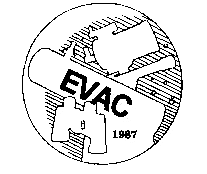
EAST VALLEY
ASTRONOMY CLUB
OBSERVING PROGRAMS
Are you a beginning observer who is unsure of where to aim your telescope? Have you located a few of the brighter deep sky objects, but are not sure where to go from there? Tired of spending good clear nights wandering aimlessly among the stars?
The EVAC Observing Programs offer a great way to sharpen your observing skills while learning more about the night sky. The process also provides structure and challenge in your observing sessions.
Program Details
By successfully completing any of these programs, club members will earn a plaque from EVAC. Some programs may also meet the requirements for Astronomical League certification. The East Valley Astronomy Club invites all interested amateurs to participate in these observing programs, however formal recognition is only available to club members.
Whatever your level of observing expertise, EVAC has a program to suit you. Everyone benefits from participation in an organized observing program!
Getting Started
Getting started on any of the EVAC Observing Programs is as easy as 1 ... 2 ... 3 ... 4...
-
Select the program in which you would like to participate, click on the link and print out the information.
-
Observe all objects on the list either visually or with a CCD camera or any combination of the two, or both. If the observations are done visually, record your impressions in a journal. Include as much detail as possible. Click here to get the generic EVAC Observation Log form. Specific log forms are available within each observing program below.
-
When you have finished the list, submit the completed observing log (or a copy thereof) to the EVAC Observing Programs Coordinator. If your observations are done with a CCD camera, please submit your images in addition to the EVAC observing log.
-
After verification, you will receive a small plaque suitable for mounting on your telescope.